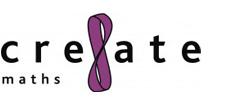Engineering
Did you try to weld with chocolate? Build a chair from newspaper or did your team build the tallest ICE tower? Following a visit to the Big Bang 2013 try some of these curriculum linked activities to promote learning about different structures. Investgate building towers from a single sheet of paper in maths, build a bridge made entirely out of food in D & T. Make nets of 3D shapes to design and build a town. Engage children by practical demonstration of the forces involved in buildings or look at how animals create such a variety of designs for their homes.
Bridges and Structures
Develop thinking and problem solving skills with Maths problem. Children are challenged to create the tallest tower or the longest bridge from a single sheet of A4 paper.They then discuss their designs and why they chose them. This idea could be used as a whole class investigation at Key Stage Two.
Building a Town
Combine maths and D & T when designing nets to build different shaped buildings for a town. Children think about how to draw a net for various 3D shapes then assemble their buildings. Could be adapted to create a particular style of building. For example place a cuboid onto a cube to create a Tudor house, which may then be decorated in typical Tudor style. This makes a great classroom display.
Welding with Chocolate
Following a visit to The Welding Institute stand show your class how to build bridges by welding chocolate. This activity demonstrates the strength of structures, welding, melting, reversible change, strength testing and the properties of materials. Includes teacher's notes and activity sheets for use in class. The task, and the structures built, can be adapted for different individual groups.
A Taste for Bridges
Bring bridges to life with this Teacher's TV programme, which shows a lesson where Year Five and Six children are challenged to design and build a model bridge out of food. This is a great idea for a D&T project to develop thinking skills.
Shelter for the World
Engineers without Borders UK look at how technology can be used to solve problems for the world's poorest. Use this resource to follow up back in class. Children play games and role-play as they explore World issues on shelter deprivation and design houses for different needs in different areas of the world. These activities are linked to the curriculum areas of design and technology, geography and PSHE and promote thinking and problem solving skills.




